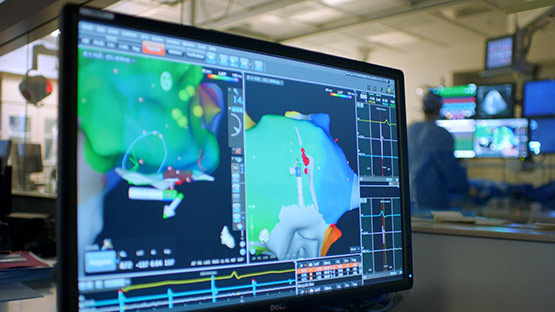Through every triumph and every stumble — we see you.

Through every triumph and every stumble — we see you.
Whether you check in with us once a year, or use our services every single week, AHN understands your unique needs and cares for you as a whole person, not just as our patient.
At AHN, we offer many ways for you to receive expert care. From virtual visits to stopping by one of our facilities, there’s always an option that fits your needs.

Find care you need on your schedule. Use our new online scheduling tool to schedule with a new provider or log in to MyChart to schedule with your PCP.

With AHN, the right care is always close to home. Use our Find Care tool to easily locate a specialist and book an appointment at a time that works for you.

We have hospitals, urgent and express care centers, and outpatient centers in your neighborhood so you can experience innovative care close to home.
Our specialist teams provide clarity and help you through even the most complex medical conditions. And, with locations throughout western Pennsylvania, you’re never far from care.

We're committed to providing innovative, personalized care that meets your needs. We offer care in every medical specialty, centralizing our services around your needs as a patient through our institute model.

AHN has taken extra safety precautions within our facilities to reduce your risk of Coronavirus. If you’re having a true medical emergency, don’t delay treatment. Dial 911 or visit your closest emergency department.

Send messages to your doctor, view test results, request prescription renewals, pay medical bills, and more — all from your computer, tablet, or smartphone.
Stay protected, check symptoms, find a testing site, get care, view visitor guidelines, and more at AHN.
Getting health care right for our customers — by improving access, quality, and customer experiences — is the cornerstone of our promise to you.

See how Allegheny Health Network and Highmark have dedicated themselves to bringing cutting-edge facilities and affordable care to western Pennsylvania.

Get quick access to the latest news and information happening across AHN. Download apps and listen to podcasts created to connect you to care.

Featuring hands-on experiences led by AHN experts, our classes and events cover topics such as newborn basics, support groups for your condition, and more.

AHN West Penn is Pittsburgh’s highest-rated hospital for obstetrics and gynecology.

Medical breakthroughs affect us all. They help us recover quickly and return to healthy, active lives. Each day, Allegheny Health Network (AHN) fosters these breakthroughs to make tomorrow's treatments even better than today.



When you have health questions, ask a nurse anytime — free of charge.



Call weekdays from 7:00 AM to 5:00 PM (closed weekends and holidays).
Find a specialist, search clinical trials, and discover continuing medical education events. Learn about nursing as well as our internship, residency, and fellowship opportunities.